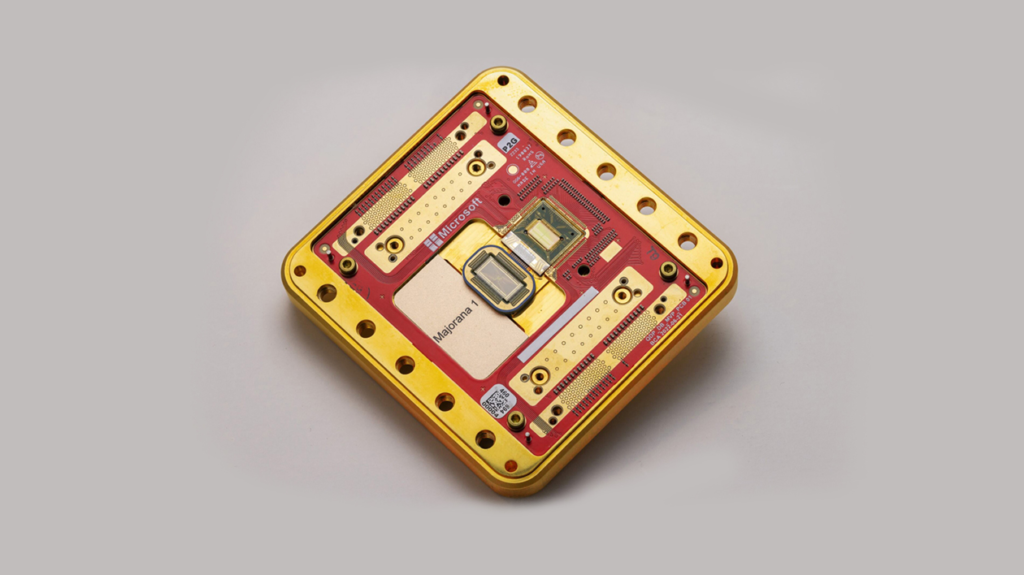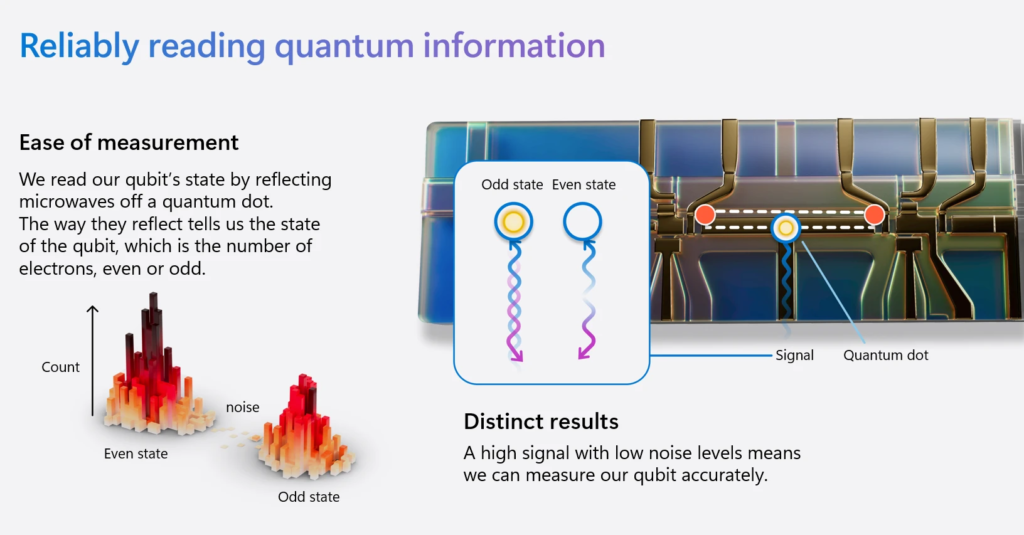
Microsoft has announced a significant milestone in quantum computing with the introduction of the Majorana 1 chip. This innovation marks a leap forward in the development of practical quantum computers, leveraging a novel Topological Core architecture based on Majorana quasiparticles. This new approach promises to accelerate the transition from theoretical quantum systems to scalable, real-world applications.
The Majorana 1 Chip and Topological Core Architecture
The Majorana 1 chip is built using a pioneering class of materials known as “topoconductors,” which facilitate the creation and control of Majorana particles. These particles are unique quasiparticles that exist at the edge of certain topological materials and are predicted to be crucial for error-resistant quantum computation. By utilizing Majorana particles, Microsoft aims to create topological qubits that inherently offer greater stability and lower error rates compared to conventional quantum bits.
Unlike other qubit implementations such as superconducting qubits or trapped ions, topological qubits are designed to be fault-tolerant. This intrinsic stability reduces the computational overhead required for error correction, making them a promising alternative to existing quantum computing architectures.
Topoconductors: The Foundation of Majorana Particles
One of the most crucial breakthroughs in the development of the Majorana 1 chip is the discovery and application of “topoconductors”—a new class of materials that exhibit topological superconductivity. These materials, such as hybrid structures composed of indium arsenide and aluminum, provide an environment where Majorana quasiparticles can emerge and be manipulated.
These topoconductors function under extreme conditions, requiring near-absolute-zero temperatures and precisely controlled magnetic fields. The resulting topological superconducting state allows for the emergence of Majorana zero modes at the ends of nanowires, which serve as the foundation for encoding quantum information in a more stable and less error-prone manner.

Qubit Stability and Error Resistance
Topological qubits differ significantly from traditional superconducting or trapped-ion qubits in their ability to resist errors. In conventional quantum computing architectures, qubits are highly susceptible to decoherence due to environmental interactions. This necessitates complex error-correction schemes that introduce computational overhead.
In contrast, topological qubits leverage the unique properties of Majorana particles, which exhibit non-Abelian statistics—allowing quantum information to be encoded in a way that is inherently protected from local disturbances. This property reduces the error rates and extends coherence times, potentially enabling large-scale quantum computations without the immense overhead of traditional error correction.
Scalability: A Path to One Million Qubits
One of the key promises of the Majorana 1 chip is its potential scalability. Microsoft claims that this new quantum chip could support up to one million qubits on a single, palm-sized chip. Such scalability is essential for quantum computers to tackle real-world challenges that are currently beyond the reach of classical supercomputers.
Achieving such a high qubit density is made possible by the compact nature of topological qubits and the efficient design of the Topological Core architecture. The architecture integrates both the qubits and control electronics in a way that allows for efficient qubit manipulation, readout, and entanglement across a vast number of computational units.
Additionally, the Majorana 1 chip is designed for seamless integration with cloud-based quantum computing services, such as Microsoft Azure Quantum. This cloud-first approach will provide researchers and developers with direct access to cutting-edge quantum capabilities without the need for costly and complex on-premises quantum hardware.
Addressing the Challenges of Quantum Computing
Quantum computing has long been plagued by issues of decoherence, noise, and error correction, which have hindered its practical application. Microsoft’s approach with topological qubits seeks to mitigate these challenges by ensuring that qubits are more resistant to environmental interference. This could significantly reduce the overhead required for error correction, making quantum computations more efficient and practical.
However, while the Majorana 1 chip represents a breakthrough, there are still hurdles to overcome before large-scale quantum computing becomes a reality. These include manufacturing challenges, ensuring consistent qubit behavior, and integrating quantum systems with classical computing infrastructure. Nevertheless, Microsoft’s advancements place it at the forefront of the quantum computing race.
Potential Impact on Industry and Research
The development of the Majorana 1 chip could have a transformative impact across multiple sectors:
- Healthcare and Pharmaceuticals: Quantum simulations could accelerate drug discovery and the development of new medical treatments by enabling more accurate molecular modeling.
- Materials Science: Advanced quantum modeling could lead to the creation of new materials with groundbreaking properties, such as superconductors or ultra-durable composites.
- Finance and Cryptography: Quantum algorithms could optimize financial models and enhance encryption methods, redefining cybersecurity.
- Artificial Intelligence: The integration of quantum computing with AI could lead to powerful new models capable of solving complex problems faster than ever before.
- Climate and Energy Solutions: Quantum simulations can help in optimizing energy production, storage, and distribution, leading to more sustainable technologies.
Future Outlook
While the Majorana 1 chip is still in its early stages, it represents a major step toward achieving practical quantum computing. Microsoft’s approach with topological qubits may ultimately provide a pathway to overcoming the biggest hurdles in quantum hardware development. If successful, this technology could drastically shorten the timeline for widespread adoption, making quantum computing a practical tool within years rather than decades.
As quantum computing continues to advance, it will be crucial to monitor the progress of Microsoft and other key players in the field. The coming years may see an accelerated push toward practical quantum applications, reshaping industries and redefining the limits of computational power.
